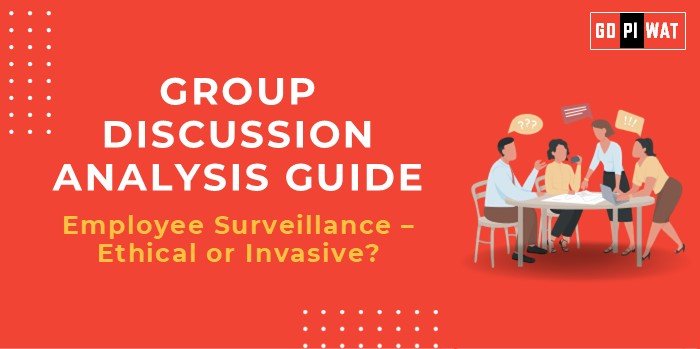📋 Employee Surveillance – Ethical or Invasive?
🌐 Introduction to Employee Surveillance
Employee surveillance is a rapidly growing practice in workplaces globally, fueled by technological advancements and remote working trends. Its implications on productivity, trust, and privacy are hotly debated.
Surveillance technologies, such as monitoring software and biometric systems, are used to track employee activity, ensure security, and measure efficiency. The rise in remote work has amplified discussions about its ethical boundaries and legal implications.
📊 Quick Facts and Key Statistics
💼 Remote Work Adoption: Over 60% of companies employ surveillance tools post-2020 pandemic.
📋 Employee Sentiment: 67% of employees find surveillance invasive, according to a Gartner survey.
🔒 Data Breaches: 50% of workplace data breaches are linked to inadequate monitoring practices.
🤝 Stakeholders and Their Roles
- 👔 Employers: Implement surveillance for productivity and security; balance ethical practices.
- 🧑💼 Employees: Primary subjects; advocate for privacy and transparency.
- 🏛️ Governments: Develop labor laws and privacy regulations.
- 💻 Technology Providers: Innovate monitoring tools while ensuring data privacy standards.
- ✊ Labor Unions/Advocacy Groups: Lobby for fair monitoring practices and workers’ rights.
🏆 Achievements and Challenges
Achievements
- 🔒 Enhanced Security: Reduction in workplace data breaches by 25% in companies using surveillance.
- 📈 Productivity Gains: 20% increase in output among firms employing ethical monitoring.
- 🌐 Flexible Work Enablement: Employers feel more confident offering remote options.
Challenges
- 🔍 Privacy Violations: Cases of employee dissatisfaction and lawsuits against invasive monitoring.
- ⚖️ Ethical Concerns: Overstepping boundaries, creating mistrust among employees.
- 📜 Regulatory Gaps: Inconsistent laws on surveillance across regions.
Global Comparisons:
- 🇪🇺 European Union: Strict GDPR regulations ensure employee rights.
- 🇺🇸 United States: Employer-centric laws with fewer restrictions.
💡 Case Study: A leading tech firm faced backlash for implementing keystroke tracking, leading to talent attrition and damaged reputation.
⚖️ Structured Arguments for Discussion
- ✅ Supporting Stance: “Employee surveillance enhances productivity, ensures security, and protects company assets.”
- ❌ Opposing Stance: “Invasive surveillance infringes on privacy, damages trust, and may reduce long-term engagement.”
- ⚖️ Balanced Perspective: “While surveillance is necessary for productivity and security, it must be implemented transparently with clear boundaries.”
💬 Effective Discussion Approaches
- Opening Approaches:
- 📊 Statistics First: “With the global monitoring market projected to exceed $8 billion by 2030, the implications are worth examining…”
- 📁 Case Study Highlight: “The controversy at XYZ Corp over employee tracking software raises key ethical questions…”
- Counter-Argument Handling:
- ✔️ Acknowledge opposing viewpoints.
- 💡 Propose solutions like opt-in policies or anonymous feedback systems.
🔍 Strategic Analysis of Strengths and Weaknesses
- Strengths: Enhanced productivity, stronger security.
- Weaknesses: Employee resistance, legal risks.
- Opportunities: Improved employee engagement with transparent tools.
- Threats: Reputational risks and regulatory penalties.
🎓 Connecting with B-School Applications
Real-World Applications: Frameworks for ethical technology adoption in HR and operations.
Sample Interview Questions:
- 💼 “How can firms balance productivity and privacy in employee monitoring?”
- 📜 “What policies ensure ethical surveillance in remote working environments?”
Insights for B-School Students: Explore intersections between technology, ethics, and HR policy for internships or projects.


